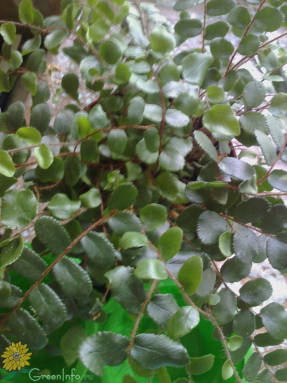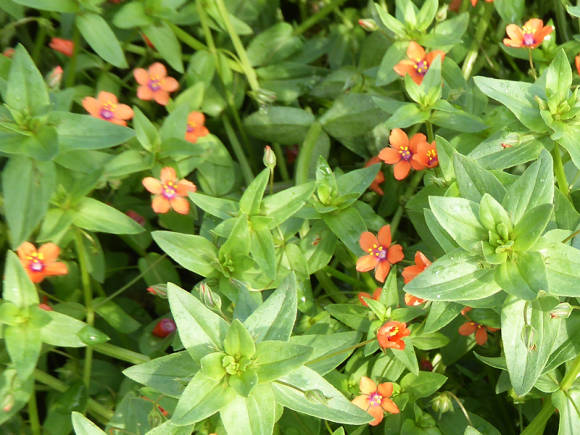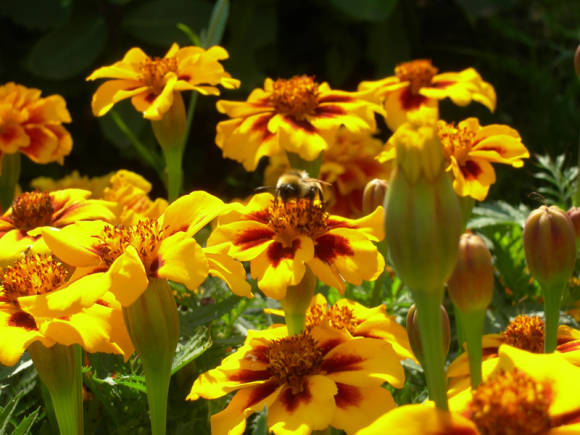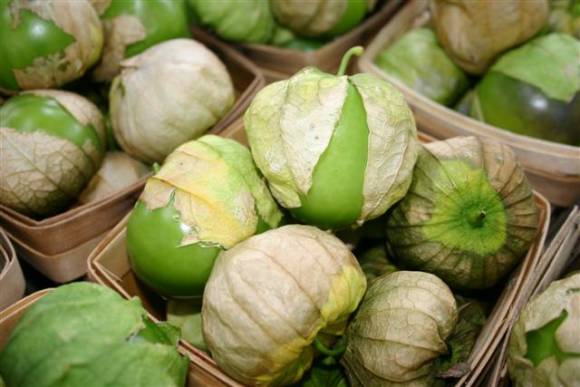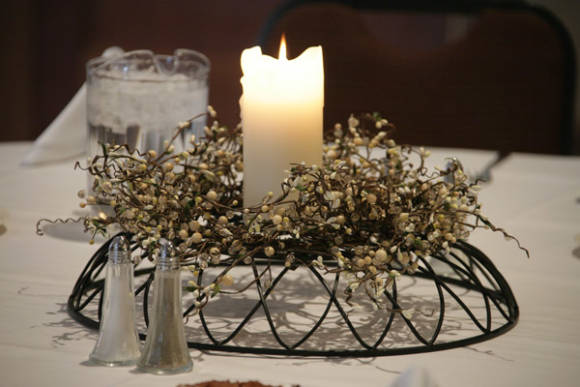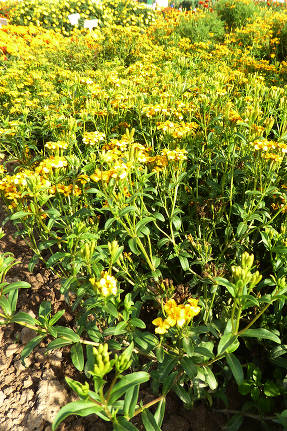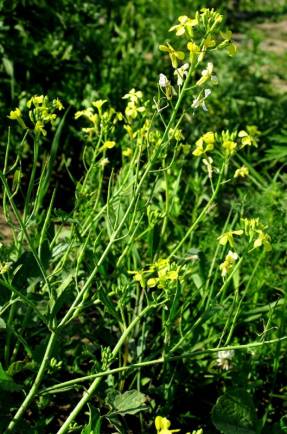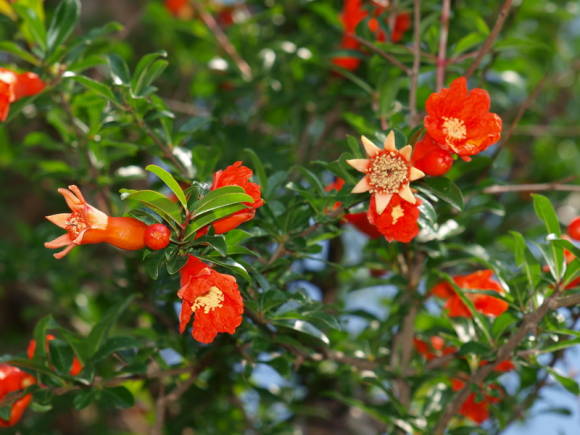
Ruta has been known since ancient times. Dioscorides willingly used this plant. It was considered a remedy for plant and animal poisons. There is evidence that rue was part of the antidote, which was taken by the Pontic king Mithridates VI Eupator in 121-64 for prophylaxis. BC. In ancient times, it was used for various diseases. The poem Odo of Men stated:
“It is very useful for the stomach when it is drunk often,
The fruit drives out into drinking and love to curb in the state,
Sciatica heals, joints, as well as fever patients ... "
In the Chapters of Charlemagne, she is referred to under the modern Latin name rue. In the XVI-XVIII centuries, it was an indispensable plant in the home and spice gardens of Europe, as it was considered an effective remedy for ... the plague that raged in those days.
Botanical description and habitat
Fragrant rue (Rutagraveolens) is a semi-shrub from the Rutaceae family 30-100 cm high with a woody, fibrous root. The stem is lignified in the lower part, branched, erect. The leaves are alternate, grayish-green, slightly fleshy, double- or triple-pinnate. The flowers are regular, greenish-yellow, on short pedicels, collected in a corymbose panicle. The fruit is a rounded 4-5-celled capsule. Each nest contains 4-6 seeds of almost black color. Blooms in June - July. The fruits ripen in September - October.
 |  |
Within Russia, it is found in the wild only in the Kaliningrad region as an invasive plant. Grows in gardens, vegetable gardens and garbage places. Diluted as a medicinal and essential oil plant.
Medicinal raw materials and active ingredients
For medicinal purposes, fresh or dried grass collected during the flowering period is used. Raw materials are dried under a canopy or in a well-ventilated area.
The leaves and top shoots contain an essential oil (up to 0.5%), which contains nonanone, linalool, undecanone, undecanol; in addition, rutin, bergapten furocoumarins, xanthotoxin, pangelin, psoralen, daphnoretin) (up to 1%), resins, alkaloids of various chemical structures (rutamine, graveolin, dictamnine), malic acid.
Application in official and traditional medicine

In our country, rue is not used by scientific medicine, but in a number of European countries it is included in the Pharmacopoeia.
However, rue is a poisonous plant and requires careful application and strict adherence to dosage. In addition, the contained furocoumarins exhibit phototoxic effects.
The herb of rue has, according to traditional medicine, a significant range of pharmacological activity. It is known as a tonic, antispastic, antiseptic, anticonvulsant, hemostatic and antitoxic agent.
It is used for neuroses, atherosclerosis, menopause. Ruta is effective in the treatment of asthenic conditions, hysteria, epilepsy, headache.
Ruta herb is used for rheumatism, gout, impotence, myopia, fragility of blood vessels, scrofula, rickets, as well as for spastic pain in the stomach and intestines. Fragrant rue has a general tonic effect, relieves fatigue, calms the nervous system. Preparations from this plant reduce spasms of smooth muscles of the urinary tract and peripheral blood vessels, lower blood pressure, and increase urine output. Herbal tea is considered a good remedy for impotence. An infusion of leaves is used for stagnation of blood in the internal organs, as a calming agent for nervous irritability. According to some reports, taking an infusion of rue herb with grape wine helps with impotence.
In traditional medicine, fresh rue juice is used internally for the bites of poisonous insects and snakes, as well as for poor eyesight.
Fresh leaves are applied to the site of bruises and bruises.
Home use
Infusion of leaves prepared from 1 teaspoon of crushed raw materials, which is poured with 1 glass of boiling water, insisted for 2 hours, filtered. Take 50 ml 3 times a day.
To prepare cold herb infusion, 1 teaspoon of crushed raw materials should be poured with 2 cups of cold boiled water, insisted for 8 hours, drain. Take 1/2 cup 4 times daily before meals.
The tincture is the most convenient to use and, using it, it is easier to maintain the exact dosage. It is prepared with vodka in a ratio of 1: 5. Insist 10 days in a dark place, drain. Take 10 drops in 1 tablespoon of water 3 times a day.
Ruta preparations are contraindicated in pregnancy, hypotension, hyperacid gastritis, gastric ulcer and duodenal ulcer. In case of an overdose, irritation of the mucous membrane of the digestive tract, swelling of the tongue and larynx, fainting, vomiting, diarrhea, convulsions, general weakness, kidney and liver damage may occur. Topical application of rue sometimes causes skin burns.
And in order not to be mistaken with the dose and not to forget about contraindications, you can take homeopathic preparations of rue, which are prescribed for bruises, sprains, spasms, rheumatism, excessive stress.
Other application
Young leaves are eaten. They are used as a spice for flavoring tea, soft drinks, sausages, sauces, added to canned cucumbers and tomatoes, lamb and cheese dishes. Ruta essential oil is used in the alcoholic beverage industry in the production of cognac and liqueurs.
Growing on the site

The plant is very decorative almost all season. Given its southern origin (Mediterranean), the plant should be placed in a sunny area protected from cold winds. The soil is preferable fertile, permeable. Ruta does not tolerate stagnant moisture in spring.
The plant propagates by seed. It is better to sow them in a pot in March and grow seedlings. In the phase of 3-4 true leaves, the plants dive. It is better to plant immediately in separate pots, then when planted in a permanent place, the plants quickly start to grow and acquire a decorative look.
Seedlings are planted at a distance of 30-40 cm in early June. Care consists in weeding, loosening and feeding with complex fertilizers or diluted mullein or bird droppings.
You can sow seeds directly into the ground in early spring, but in this case, the consumption of seeds increases greatly, and the plants will be truly decorative only by the next season.
Sheltering plants for the winter does not always give good results. They often start to vomit. Therefore, to cover or not to cover is a rather controversial issue. In the spring, the plants are cut to live wood and fed. In this case, they grow back rather quickly and form a large leaf mass. Plants grow in one place in the non-chernozem zone for 3-5, and sometimes even more years. But gradually they still begin to fall out, so you need to take care of replacement.
The plant is so decorative that it will decorate any plant composition: mixborder, rocky garden and just a flower bed in front of the house.
